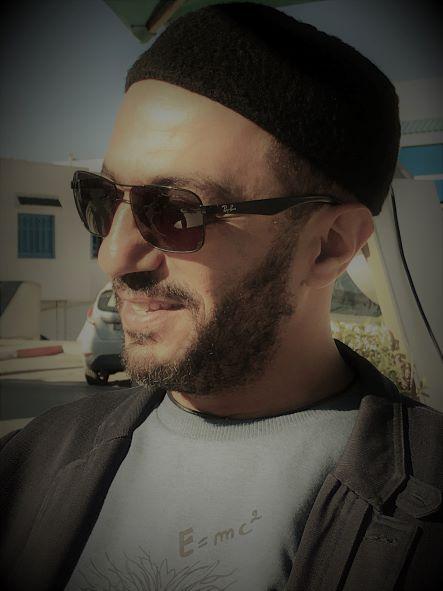More to Brussels than meets the eye
As the European Union prepares for a political shift eastwards, its famously Byzantine politics will get just that bit more confusing. The new member states may make the EU's bureaucratic landscape seem greyer, but the accompanying influx of thousands of eastern Europeans will make the cultural kaleidoscope of Brussels that much more colourful.
If New York is the ‘Big Apple', Brussels could be likened to the ‘Big Onion', the outer bureaucratic layer being the European Union. Peel that away and you'll find a complex and equally bewildering domestic political apparatus, which has evolved to cater for the country's three language groups: Dutch, French and German.
As newcomers soon discover, accommodating officialdom – which is placing a premium on office space and apartments in preparation for the accession of 10 new EU member states in May – is not the city's only claim to fame. Belgian fries with mayonnaise, an unrivalled beer culture and waffles may constitute the city's ‘staid' image. But if Brussels is Europe's comic strip capital, one should not stoop to caricature and write it off as a backwater.
A dizzying mix of cultures
While tiny Brussels lacks the lustre of its giant cousins Paris or London, closer inspection unearths a vibrant, cosmopolitan city full of contrasts that begs to be explored. Diversity penetrates to the very core of this multi-layered town's identity: from its architecture to its people. Although Brussels is historically a Flemish city, 90 percent of its Belgian population are French speakers, and at least a third of its inhabitants are foreign.
Brussels is where French-speaking Wallonia and Dutch-speaking Flanders awkwardly meet. Sometimes it can seem like two cities superimposed upon one another or a single city with a split personality. Each community has its own theatres, concert halls and bookshops. Menus, stations and street names are posted both in French and Dutch, with the surreal effect that if you find yourself in Kunst-Wet, you also happen to be in Arts-Loi.
Long accustomed to duality, Brussels has found it relatively painless to absorb a large influx of foreigners, although a higher incidence of poverty and unemployment among immigrants does cause a certain amount of friction. Eurocrats, international business people and diplomats unwittingly rub shoulders with immigrant Turks, Moroccans, Congolese, Spaniards and Italians. With the EU's eastward expansion, thousands of eastern Europeans will add to the city's rich linguistic, cultural and culinary cocktail.
Rich architectural diversity
The city's architecture also resonates with colourful contrasts. Unlike the uniform splendour of Paris, Brussels is a haphazard jumble of the beautiful, the stunning, the ugly and the banal. In addition to the medieval quaintness of its historic centre, Brussels was at the centre of the early 20th-century Art Nouveau architectural movement with fantastic examples, such as the Musical Instruments Museum, peppered around the landscape. Tree-lined avenues, beautiful old townhouses, converted exchanges and markets are a ghostly reminder of the old city that is giving way to the spanking glass and steel towers of the business and EU districts.
Inner city Brussels is compact enough to make walking the best way to become acquainted with what your new home town has to offer. Aimless wandering pays great dividends. But for the non-adventurous, recommended routes are obtainable from any tourist information office.
You can find your feet by joining the tourists in the picturesque historic quarter. A maze of narrow, cobbled alleys leads to the magnificent Grote Markt or Grand'Place. Dating back to the 10th century but rebuilt in the 17th, the square boasts a magnificent gothic town hall and pristine guild houses. Once a market, it is now a venue not just for tourists but also for concerts and festivals that attract rockers, medieval jesters on stilts and knights on horses. In summer, the square is converted into a huge floral rendition of the city's coat of arms for a couple of days in August.
Unusually for a capital city, low-key Brussels sports no grand monuments. Instead, cockily and self-effacingly, it identifies itself with the tiny statue of a pissing boy: its mythical guardian Manneken Pis. The city is also home to an array of beautiful churches, two royal palaces and the imposing Palais de Justice (law courts). The Atomium is a must-see, if for nothing more than the view it affords of the city.
For serious art lovers, Brussels has a good range of museums and galleries. At the lofty heights of the Kunstberg/Mont des Arts, with its panoramic view of the city, some wonderful Flemish masterpieces can be found, as well as a fine collection of classic, renaissance and modern art. Another local favourite is the distinctly Belgian Comic Strip museum housed in a well-known former Art Nouveau textile warehouse, built by Victor Horta in 1903.
Off the beaten track
Getting off the beaten tourist track will open up the city's multicultural facets. For a touch of the Congo and West Africa, head to the Matonge district, where colourful street parties and festivals take place on a regular basis. Or you can sip herbal infusions or mint-tea while enjoying pungent apple-flavoured aromas of a water-pipe at a Middle Eastern teahouse in the Marolles neighbourhood.
You'll quickly discover that the city is full of bewildering contradictions. Around the North Station is a predominantly Moroccan working-class neighbourhood that doubles as the red light district. Amsterdam-style brothels with their window-dressed prostitutes sit awkwardly among some of the passing women in their hijabs. The nearby Rue de Brabant is full of Moroccan sweet and clothes shops, halal butchers and Arabic music stores blaring out the latest Rai hits.
Brussels likes to celebrate its diversity through music. The annual Couleur Café, held at the Tour & Taxis near Place de l'Yser, brings together musicians from around the world to play on the sprawling grounds of a former train and customs depot. Free ad hoc concerts in public squares or parks pull in superb and exotic musical acts from as far a field as Tuva.
In addition to a clubbing scene to suit most tastes, Brussels has several permanent music arenas, such as the AB and Recyclart, which attract top alternative and pop music acts all year round, while fans of opera and classical music can get their fill at the city's splendid La Monnaie/De Munt opera house.
The long overdue reopening of the Flemish Community's Beursschouwburg kicked off in style in February with 10 days of non-stop entertainment. Within walking distance lies the Walloon Community's National Theatre which is being temporarily housed on the Boulevard Anspach.
Something for all tastes
Adventurous gourmets will find a culinary map that will not disappoint. Brussels is bursting with good restaurants: Mediterranean, Arab, South American, Asian, Caribbean and West African. Savour a couscous or tajine at an upmarket Moroccan restaurant under the effervescent light of dozens of traditional lamps and dreamy ballads. Or you can venture into a Brazilian restaurant and watch the grey-haired proprietors swing their hips to an infectious salsa beat.
For those who prefer something a little less exotic, sturdy pub grub is available at any one of the city's many Irish pubs. And local specialities, such as Vol-au-Vent or mussels, blend wholesome Northern European fare and the subtleties of French cuisine.
Despite its dull international reputation, many adopted Bruxellois find the weather the only truly grey aspect of life in the city and regularly pray for the capital's colours to be accentuated by some sun. Approached with an open mind, living in Brussels can be a fascinating and rewarding experience, as long as you're prepared to get under the Big Onion's skin.
Things to try in Brussels
• Once you've found Manneken Pis, hunt out his fabled better half, the crouching Janneken Pis.
• Get in touch with your inner child by visiting the Comic Strip Museum or visit a comic bookshop.
• Savour Belgium's hundreds of delectable beer brews (not all at once, mind you) on a sunny café terrace.
• Count and try to identify how many languages you can hear within an hour or take the golden opportunity to go out and learn one of the three official tongues.
• Stroll/cycle/picnic in the forest or in one of the city's many parks.
• Go treasure hunting in the antique and flea markets, as well as second-hand bookshops.
_______
This article first appeared in the March 2004 edition of Newcomer magazine.


